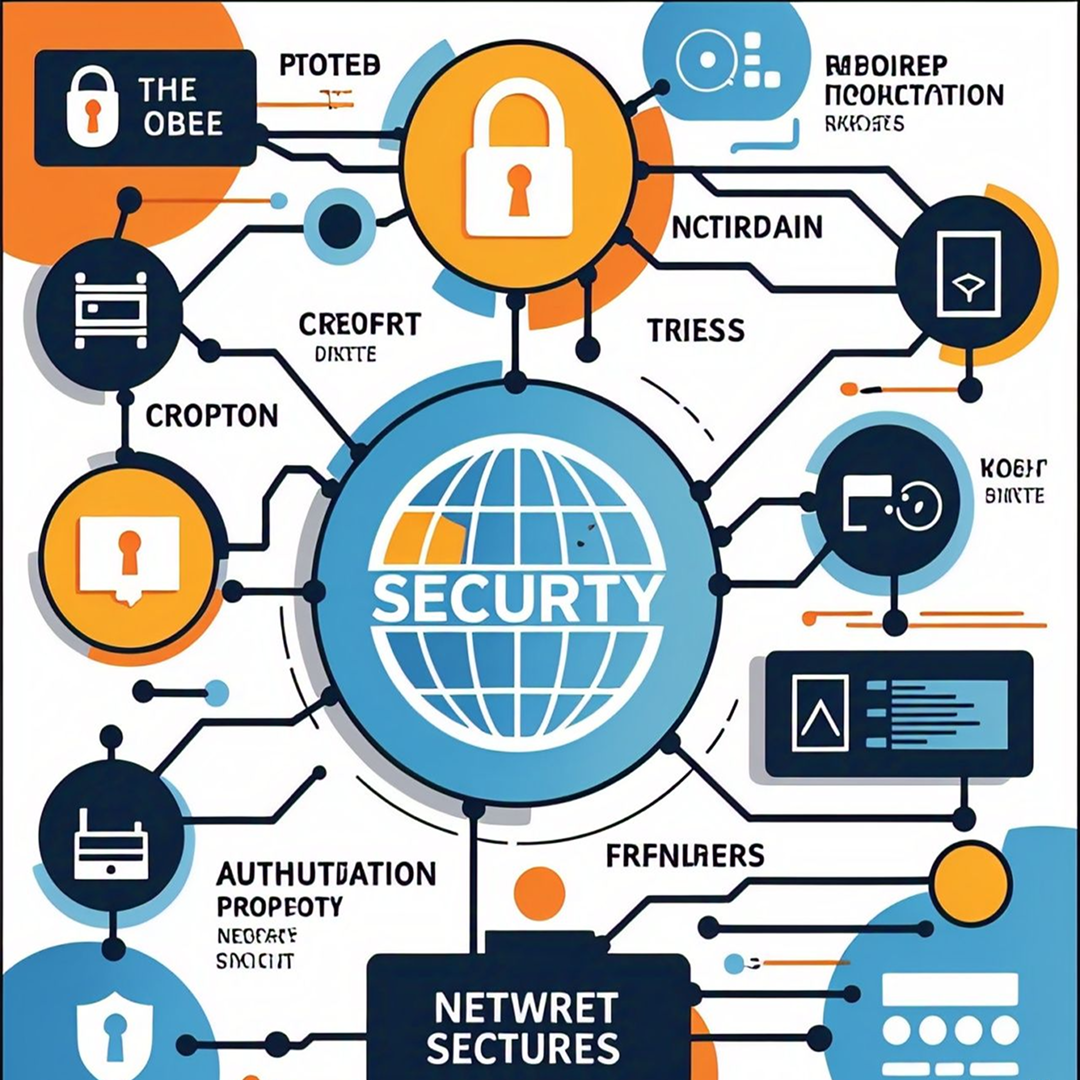Cybersecurity: Understanding Protocols and Secure Systems in IT
Introduction
In the realm of cybersecurity, protocols and secure systems form the backbone of communication and data exchange. These elements are crucial for ensuring that data is transmitted securely, efficiently, and reliably across networks. Cybersecurity measures rely on well-defined protocols to prevent unauthorized access, data breaches, and cyber threats. This blog explores various protocols used in IT, their significance in secure systems, and the challenges and solutions associated with maintaining security in an increasingly interconnected world.
1. Understanding Protocols in Cybersecurity
Protocols are formalized rules and standards that dictate how data is transmitted over a network. They define methods for data formatting, transmission, error handling, and actions taken upon receipt of data. In cybersecurity, these protocols ensure secure and efficient communication.
1.1 Communication Protocols
These govern how data is transmitted between devices. Examples include TCP/IP (Transmission Control Protocol/Internet Protocol), which is the foundation of the internet, and HTTP/HTTPS (Hypertext Transfer Protocol/Secure), which is used for web traffic.
1.2 Network Protocols
Network protocols manage data routing across networks, essential for cybersecurity. Key examples:
IP (Internet Protocol): Ensures that data packets reach their destination securely.
ICMP (Internet Control Message Protocol): Helps diagnose network security issues and vulnerabilities.
1.3 Transport Protocols
These protocols ensure accurate and secure data delivery.
TCP: Provides reliable, ordered, and error-checked delivery of data, crucial for cybersecurity.
UDP: Faster than TCP but lacks built-in security, making it vulnerable to attacks.
1.4 Application Protocols
Application-level protocols define how software communicates over a network. Examples include:
FTP (File Transfer Protocol): Used for file transfers but needs additional security layers.
SMTP (Simple Mail Transfer Protocol): Facilitates email transmission with cybersecurity measures like encryption.
2. The Role of Security Protocols in Cybersecurity
Security protocols are a subset of communication protocols designed to protect data during transmission. They ensure confidentiality, integrity, and authenticity of data. Key security protocols include:
2.1 SSL/TLS (Secure Sockets Layer/Transport Layer Security)
These protocols encrypt internet data, securing communications and transactions against cyber threats.
2.2 IPsec (Internet Protocol Security)
IPsec encrypts and authenticates data at the IP layer, securing Virtual Private Networks (VPNs).
2.3 SSH (Secure Shell)
SSH provides a secure way for remote login and command execution, preventing cyber attacks like eavesdropping.
2.4 S/MIME (Secure/Multipurpose Internet Mail Extensions)
This protocol is used to secure email communications by providing encryption and digital signatures.
3. Importance of Secure Systems in Cybersecurity
Secure systems are essential for protecting sensitive data from unauthorized access, breaches, and cyber threats. The importance of secure systems can be summarized as follows:
3.1 Data Protection
Secure systems safeguard sensitive information, including personal data, financial records, and intellectual property, from theft and unauthorized access.
3.2 Compliance
Many industries are subject to regulatory requirements regarding data protection (e.g., GDPR, HIPAA). Secure systems help organizations comply with these regulations, avoiding legal penalties.
3.3 Trust and Reputation
Organizations that prioritize security build trust with their customers and stakeholders. A strong security posture enhances the organization’s reputation and can be a competitive advantage.
3.4 Operational Continuity
Security breaches can lead to significant downtime and operational disruptions. Secure systems help ensure business continuity by mitigating risks associated with cyber threats.
4. Challenges in Implementing Secure Protocols
While protocols and secure systems are vital for IT security, their implementation comes with challenges:
4.1 Complexity
The integration of various protocols can lead to complexity in network architecture. Organizations must ensure that different protocols work seamlessly together without introducing vulnerabilities.
4.2 Performance Overhead
Security protocols often introduce latency due to encryption and decryption processes. Organizations must balance security with performance to maintain user experience.
4.3 Evolving Threat Landscape
Cyber threats are constantly evolving, requiring organizations to stay updated with the latest security protocols and practices. Failure to do so can leave systems vulnerable.
4.4 User Awareness
Even the most secure systems can be compromised by human error. Organizations must invest in training and awareness programs to educate users about security best practices.
5. Best Practices for Secure Protocol Implementation
To effectively implement secure protocols and systems, organizations should adhere to the following best practices:
5.1 Regular Updates and Patching
Keeping software and protocols up to date is crucial for protecting against known vulnerabilities. Organizations should establish a routine for applying updates and patches.
5.2 Use of Strong Encryption
Employ strong encryption standards for data transmission. Protocols like TLS should be configured to use the latest versions and strong cipher suites.
5.3 Access Control
Implement strict access control measures to ensure that only authorized users can access sensitive data and systems. This includes the use of multi-factor authentication (MFA).
5.4 Network Segmentation
Segmenting networks can limit the spread of breaches and reduce the attack surface. Sensitive data should be isolated from less secure parts of the network.
5.5 Regular Security Audits
Conducting regular security audits and assessments helps identify vulnerabilities and ensures compliance with security policies.
6. Future Trends in Cybersecurity Protocols and Secure Systems
The landscape of IT protocols and secure systems is continuously evolving. Future trends include:
6.1 Zero Trust Architecture
Zero Trust security ensures continuous authentication for users and devices.
6.2 Quantum Cryptography
Future cybersecurity will rely on quantum encryption for unbreakable security.
6.3 Blockchain Technology
Blockchain enhances data security through decentralized and immutable record-keeping.
6.4 AI and Machine Learning
AI and machine learning improve real-time cybersecurity threat detection and response.
Conclusion
Protocols and secure systems are essential pillars of cybersecurity in IT infrastructure. They enable secure data transmission, protect against cyber threats, and ensure business continuity. As organizations navigate digital transformation, implementing robust cybersecurity measures remains a strategic imperative. By integrating secure protocols, staying updated with industry trends, and fostering a cybersecurity-aware culture, businesses can strengthen their defenses against evolving threats.
In an era of rising cyber risks, investing in protocols and secure systems in networking is essential for safeguarding digital assets and maintaining trust in the digital world.
Do you like to read more educational content? Read our blogs at Cloudastra Technologies or contact us for business enquiry at Cloudastra Contact Us.
